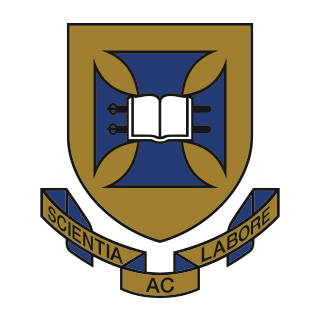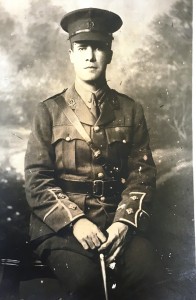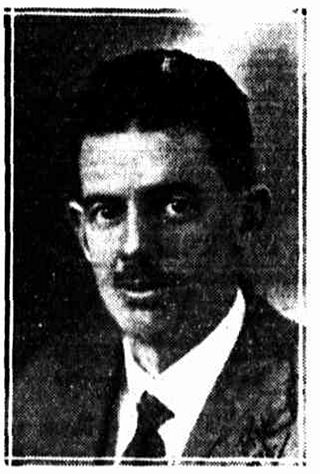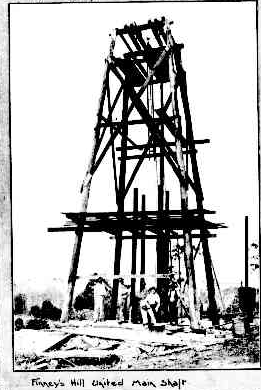
The University of Queensland is a public research university located primarily in Brisbane, the capital city of the Australian state of Queensland. Founded in 1909 by the Queensland parliament, UQ is one of the six sandstone universities, an informal designation of the oldest university in each state. UQ is also a founding member of edX, Australia's leading Group of Eight and the international research-intensive Association of Pacific Rim Universities.

Mount Isa is a city in the Gulf Country region of Queensland, Australia. It came into existence because of the vast mineral deposits found in the area. Mount Isa Mines (MIM) is one of the most productive single mines in world history, based on combined production of lead, silver, copper and zinc.

Cloncurry is a rural town and locality in the Shire of Cloncurry, Queensland, Australia. It is informally known by local people as The Curry. In the 2021 census the locality of Cloncurry had a population of 3,167 people.
Mount Isa Mines Limited ("MIM") operates the Mount Isa copper, lead, zinc and silver mines near Mount Isa, Queensland, Australia as part of the Glencore group of companies. For a brief period in 1980, MIM was Australia's largest company. It has pioneered several significant mining industry innovations, including the Isa Process copper refining technology, the Isasmelt smelting technology, and the IsaMill fine grinding technology, and it also commercialized the Jameson Cell column flotation technology.

Russell Wigton Skerman was a judge of the Supreme Court of Queensland from 1962 to 1973. Skerman was the Northern Judge based in Townsville, Northern Queensland from 1962 to 1970. In 1970, he transferred to the Supreme Court in Brisbane until his retirement in 1973. He was also an acting judge of the Supreme Court in Townsville for two months in May and June 1953.
The Australasian Institute of Mining and Metallurgy (AusIMM) provides services to professionals engaged in all facets of the global minerals sector and is based in Carlton, Victoria, Australia.
MIM Holdings Limited was an Australian mining company created in 1970 as the parent company of Mount Isa Mines Limited, which operates the Mount Isa mines in north-west Queensland. Based in Brisbane, the capital city of the Australian state of Queensland, MIM Holdings owned and/or operated coal, gold, and base metal mines in Australia and Argentina. It also operated lead and copper smelters in Mount Isa, a copper refinery in Townsville (Queensland), a lead refinery at Northfleet (England), zinc smelters using the Imperial Smelting Process at the National Smelting Company located within Avonmouth Docks (England) and Duisburg (Germany), and a precious metals refinery in Sydney.

The Jameson Cell is a high-intensity froth flotation cell that was invented by Laureate Professor Graeme Jameson of the University of Newcastle (Australia) and developed in conjunction with Mount Isa Mines Limited.

Edward Oswald Marks, was an Australian ophthalmologist. He studied first as a geologist, and then began a second career as an ophthalmologist. His work on preventing trachoma in children was significant in reducing eye disease in remote communities.

Casa Grande is a heritage-listed villa at Nettle Street, Mount Isa, City of Mount Isa, Queensland, Australia. It was designed by Donoghue, Cusick & Edwards and built in 1949. It was added to the Queensland Heritage Register on 28 May 1999.

Alan Knox Denmead (1902–1994) was an Australian geologist, and Chief Government Geologist for Queensland from 1956–1967.
Frank Thomas Matthews White (1909–1971) was an Australian mining and metallurgical engineer and mineral science educator. His career included appointments in Australia, Fiji, Malaya, and Canada.
Sir James William FootsAOFTSEHonFAusIMMMIMMFCIC was an Australian mining engineer and Chairman of Mount Isa Mines and Chancellor of the University of Queensland.
Ray Whitmore (1920–2008) was a British mining and metallurgical engineer and academic, who specialised in research into radar, mining and metallurgical engineering and mining heritage in England and Australia.

The Indooroopilly Silver Mine is a historic silver mine at Indooroopilly, Brisbane, Australia
Sir George Read FisherHonFAusIMM was one of Australia's leading mining executives. In 2019, he was posthumously inducted into the Queensland Business Leaders Hall of Fame in recognition of his eminent business leadership, driving the long-term success of Mount Isa Mines and Mount Isa's growth and development as a city.
Fisher is a suburb in the City of Mount Isa, Queensland, Australia. In the 2021 census, Fisher had a population of 65 people.
Alban Jude LynchAOHonFAusIMM was a mining engineer and academic who helped develop the mineral processing teaching experience for mining students in Australia.
Ian MorleyISO (1904–1989) was an Australian mining engineer and administrator, who advocated for safe mining practices and reforms for the Australian mining industry.

James Richard MayFTSE HonFAusIMM was an Australian chemical engineer and company director who was the Chief Executive Officer of the Australian Minerals Industry Research Association Limited (AMIRA) between 1968 and 1994. He was also a fellow of a number of chartered institutions and organisations and was on various committees and academic associations and institutes.












